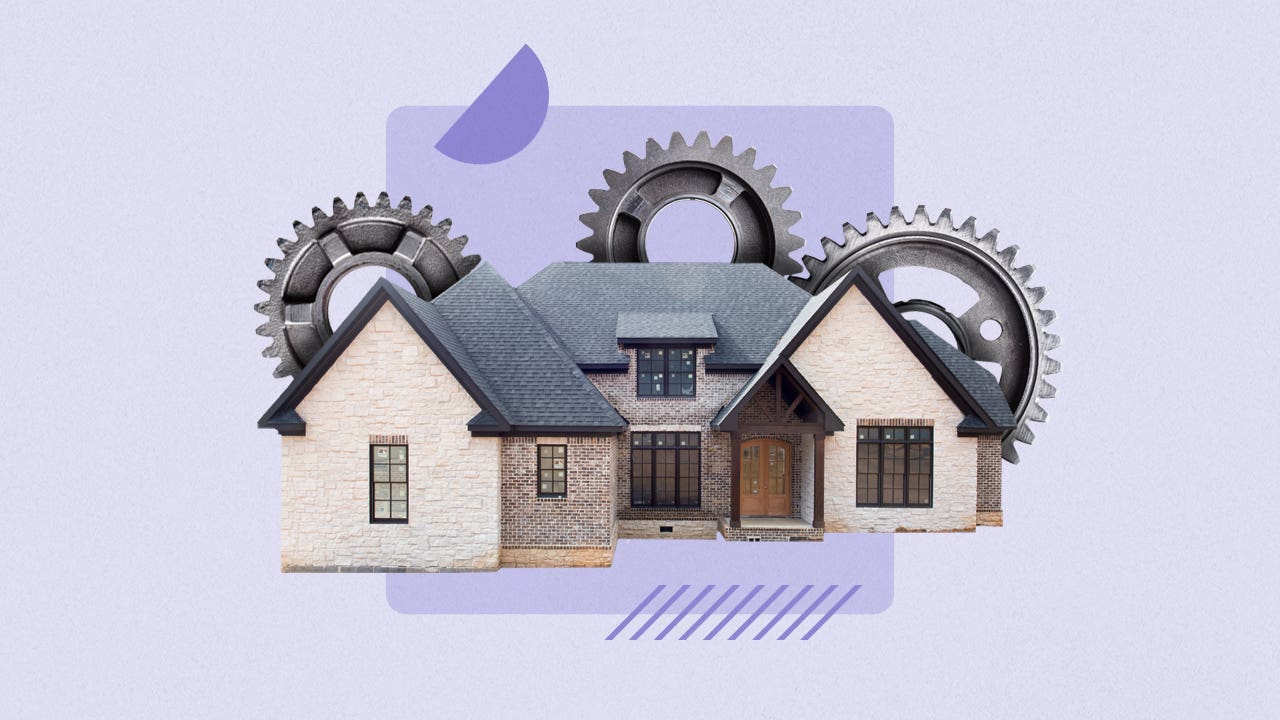Pros and cons of an adjustable-rate mortgage (ARM)




Key takeaways
- An adjustable-rate mortgage (ARM) is a mortgage whose interest rate resets at periodic intervals.
- ARMs have low fixed interest rates at their onset, but often become more costly after the rate starts fluctuating.
- ARMs tend to work best for those who plan to sell the home before the loan’s fixed-rate phase ends. Otherwise, they’ll need to refinance or be able to afford periodic jumps in payments.
Because they offer lower introductory interest rates compared to current fixed-interest mortgages, adjustable-rate mortgages (ARMs) are growing more popular. Your mortgage broker may have even recommended one as an affordable way to get into a home. These mortgages feature a fixed rate for an initial period, after which the interest moves up or down at regular intervals for the remainder of the loan’s term. However, an ARM’s variability has downsides. Here’s how to know if you should get an adjustable-rate mortgage.
Adjustable-rate mortgage pros and cons
When deciding whether an
adjustable rate mortgage (ARM)
is right for you, consider these benefits and drawbacks.
Pros of an adjustable-rate mortgage
- Lower introductory rates: An ARM often comes with a lower initial interest rate than that of a comparable fixed-rate mortgage — at least for the loan’s fixed-rate period. If you’re planning to sell before the fixed period is up, an ARM can save you a bundle on interest.
- Lower initial monthly payments: A lower rate also means lower mortgage payments (at least during the introductory period). You can use the savings on other housing expenses or stash it away to put toward your future — and potentially higher — payments.
- Monthly payments might decrease: If prevailing market interest rates have gone down at the time your ARM resets, your monthly payment will also fall. (However, some ARMs do set interest-rate floors, limiting how far the rate can decrease.)
- Could be good for investors: An ARM can be appealing to investors who want to sell before the rate adjusts, or who will plan to put their savings on the interest into extra payments toward the principal.
- Flexibility to refinance: If you’re nearing the end of your ARM’s introductory term, you can opt to refinance to a fixed-rate mortgage to avoid potential interest rate hikes.
Cons of an adjustable-rate mortgage
- Monthly payments might increase: The biggest disadvantage (and biggest risk) of an ARM is the likelihood of your rate going up. If rates have risen since you took out the loan, your payments will increase when the loan resets. Often, there’s a cap on the rate increase, but it can still sting and eat up more funds that you could use for other financial goals.
- More uncertainty in the long term: If you intend to keep the mortgage past the first rate reset, you’ll need to plan for how you’ll afford higher monthly payments long term. If you end up with an unaffordable payment, you could default, harm your credit and ultimately face foreclosure. If you need a stable monthly payment — or simply can’t tolerate any level of risk — it’s best to go with a fixed-rate mortgage.
- More complicated to prepay: Unlike a fixed-rate mortgage, adding extra to your monthly payment won’t drastically shorten your loan term. This is because of how ARM interest rates are calculated. Instead, prepaying like this will have more of an effect on your monthly payment. If you want to shorten your term, you’re better off paying in a large lump sum.
- Can be harder to qualify for: It can be more difficult to qualify for an ARM compared to a fixed-rate mortgage. You’ll need a higher down payment of at least 5 percent, versus 3 percent for a conventional fixed-rate loan. Plus, factors like your credit score, income and DTI ratio can affect your ability to get an ARM.
Interest-only ARMs
Who is an adjustable-rate mortgage best for?
So, why would a homebuyer choose an adjustable-rate mortgage? Here are a few situations where an ARM might make sense:
- You don’t plan to stay in the home for a long time. If you know you’re going to sell a home within five to 10 years, you can opt for an ARM, taking advantage of its lower rate and payments, then sell before the rate adjusts.
- You plan to refinance. If you expect rates to drop before your ARM rate resets, taking out an ARM now, and then refinancing to a lower rate at the right time could save you a considerable sum of money. Keep in mind, though, that if you refinance during the intro rate period, your lender might charge a fee to do so.
- You’re starting your career. Borrowers soon to leave school or early in their careers who know they’ll earn substantially more over time might also benefit from the initial savings with an ARM. Ideally, your rising income would offset any payment increases.
- You’re comfortable with the risk. If you’re set on buying a home now with a lower payment to start, you might simply be willing to accept the risk that your rate and payments could rise down the line, whether or not you plan to move. “A borrower might perceive that the monthly savings between the ARM and fixed rates is worth the risk of a future increase in rate,” says Pete Boomer, head of mortgage at Regions Bank in Birmingham, Alabama.
Why ARMs are popular right now
At the beginning of 2022, very few borrowers were bothering with ARMs — they accounted for just 3.1 percent of all mortgage applications in January, according to the Mortgage Bankers Association (MBA). Fast-forward to October 2025, and that figure has tripled to 9.3 percent.
Here are some of the reasons why ARMs are popular right now:
- Lower interest rates: Compared to fixed-interest mortgage rates, which remained around 6.2 percent at the end of 2025, ARMs currently have lower introductory rates. These lower rates give buyers more purchasing power — especially in markets where home prices remain high and affordability is a challenge.
- Ability to refinance: If you opt for an ARM for a lower initial rate and mortgage rates come down in the next few years, you can refinance to reduce your monthly payments further. You can also refinance to a fixed-rate mortgage if you want to keep that lower rate for the life of the loan. Check with your lender if it charges any fees to refinance during the initial rate period.
- Good option for some young families: ARMs tend to be more popular with younger, higher-income households with bigger mortgages, according to the Federal Reserve Bank of St. Louis. Higher-income households may be able to absorb the risk of higher payments when interest rates increase, and younger borrowers often have the time and potential earning power to weather the ups and downs of interest-rate trends compared to older borrowers.
Other loan types to consider
Along with ARMs, you should consider a variety of loan types. Some may have a more lenient down payment requirement, lower interest rates or lower monthly payments than others. Options include:
- 15-year fixed-rate mortgage: If it’s the interest rate you’re worried about, consider a 15-year fixed-rate loan. It generally carries a lower rate than its 30-year counterpart. You’ll make bigger monthly payments but pay less in interest and pay off your loan sooner.
- 30-year fixed-rate mortgage: If you want to keep those monthly payments low, a 30-year fixed mortgage is the way to go. You’ll pay more in interest over the longer period, but your payments will be more manageable.
- Government-backed loans: If it’s easier terms you crave, FHA, USDA or VA loans often come with lower down payments and looser qualifications.
FAQ about adjustable-rate mortgages
Why we ask for feedback Your feedback helps us improve our content and services. It takes less than a minute to complete.
Your responses are anonymous and will only be used for improving our website.




